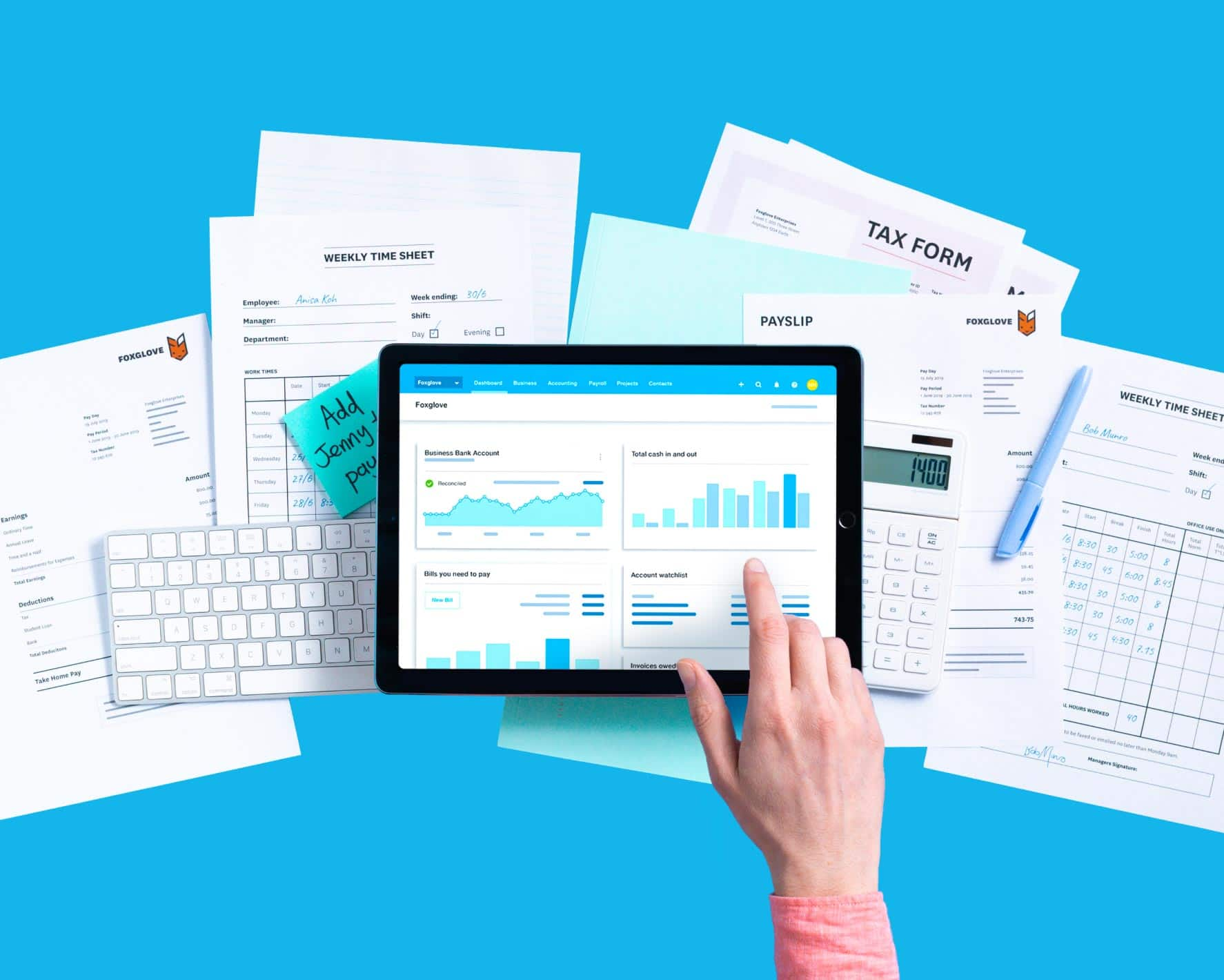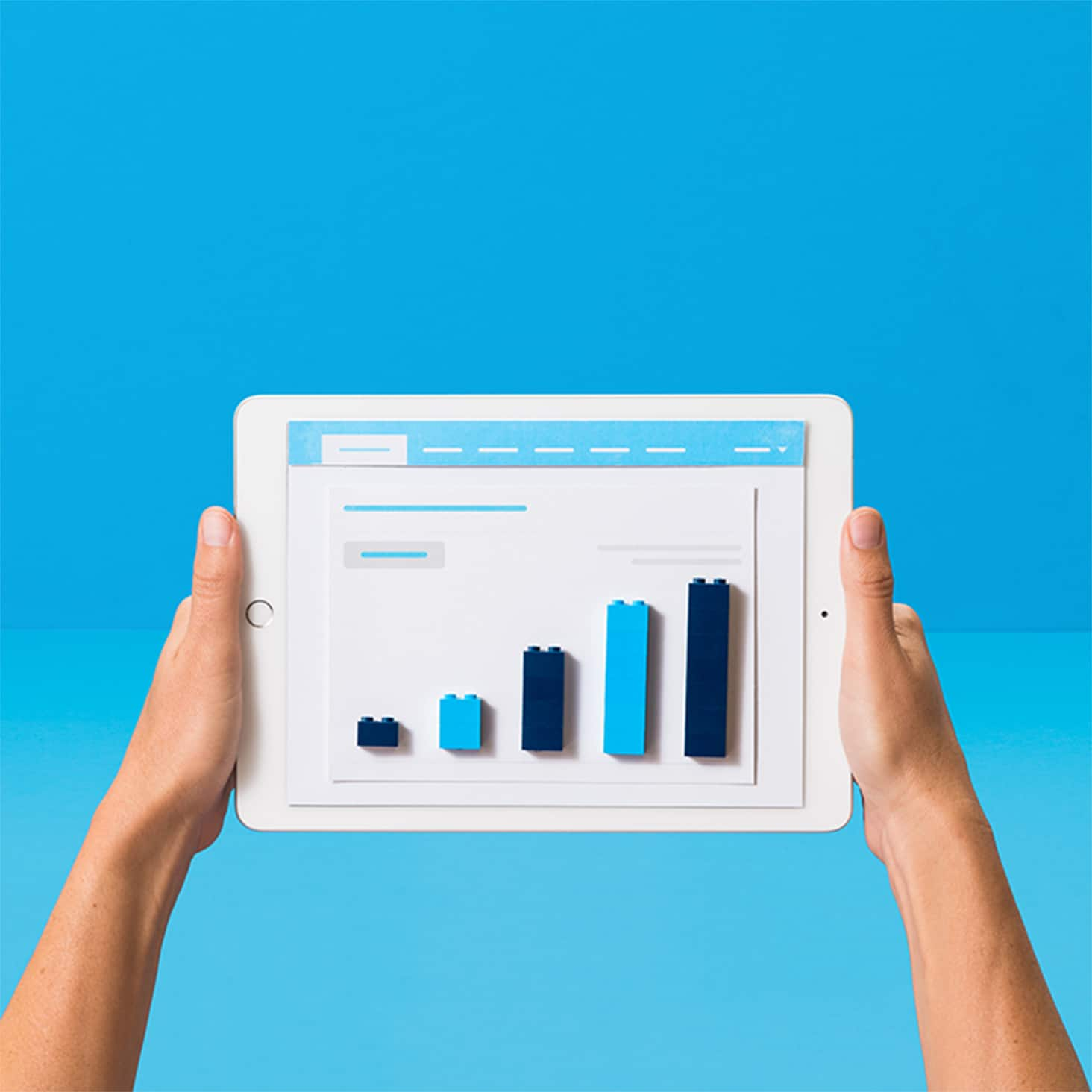Take control of end of fiscal year with Xero
Every year, you prepare end-of-year accounts and financial reports to file taxes with the IRS. But it’s also a great chance to do a retro on the year that was, tweak your strategy, and optimize your business.

Prepare for your fiscal year end
A fiscal year for a business can be any 12-month period that ends on the last day of a month. For example, 1 July to 30 June is a fiscal year. The tax year is a common example of a fiscal year. Businesses close their books at the end of the tax year and submit reports to the IRS.

Keep accurate records throughout the year
Use accounting software to capture transactions straight from your bank account, with no data double-handling.
Get clear on the expense you can claim
Seek advice if you’re not sure. Missing a deduction will cost you money.
Produce end of financial year statements
These include income statement, balance sheet, cash flow statement and statement of owner’s equity.
Put your strategy hat on
End of year reports summarize business performance, giving you an opportunity to refine your strategy.
Xero can help with your end of fiscal year
Make your end of fiscal year the start of something good. Use Xero to pull the numbers together, streamline your reporting, and put your finger on the pulse. With automated data capture your accounts will be in great shape for tax reporting, and you’ll see your business in a whole new light.
- Automated data capture and bank reconciliation
- Push-button reporting
- Online collaboration with advisors
- Integrated inventory records

Find an accountant or bookkeeper
Nothing beats advice from an expert. Accountants, bookkeepers and tax professionals can get you from the end of one fiscal year to the start of the next – dealing with all the tricky stuff in between, such as:
- closing your accounts for the year
- calculating and claiming depreciation expenses
- reconciling and writing off bad debts
- finalizing financial statements
- tax planning for the new year

Fiscal year-end for accountants and bookkeepers
It pays to be organized for end of fiscal year. Going paperless will save you and your clients from drowning in receipts and other admin. Using cloud accounting tools will speed up tasks like cash coding and bank reconciliation.
- No switching between software and tools
- Work collaboratively with multiple people logged in at the same time
- Use find-and-recode to fix client bookkeeping errors

End of fiscal year jargon buster
Complicated jargon doesn’t help the stress of fiscal year end. Here are a few explanations to get you started.
Accounting period
An accounting period is any timeframe that’s used for reporting on your finances. They can be monthly, quarterly or yearly.
Accounting period full definitionIncome tax
You pay income tax on your earnings, as an individual and a business. For a business, earnings are your profit.
Income tax full definitionTax deduction
A tax deduction is a business expense that can potentially lower the amount of tax you need to pay.
Tax deduction full definitionFinancial statements
Financial statements include your income statement, balance sheet, cash flow statement, and statement of owner’s equity.
Financial statement full definitionDepreciation
Depreciation is how businesses calculate the cost of wear and tear of physical assets, like machinery.
Depreciation full definitionExpense
An expense is payment made by a business. They are deducted from revenue to calculate profit.
Expense full definitionGross and net profit
Your income statement will show gross profit and net profit (always smaller than gross).
Learn how they differ
More about end of fiscal year and Xero
US businesses can often set their own tax year, which means there’s not a single day where everyone files. However, businesses are typically required to file on the 15th day of the fourth month after their fiscal year ends. So if your business year was the calendar year, you’d close your books on 31 December and file on the 15th of April. That means businesses have 3.5 months to prepare their tax return.
Learn when to file from the IRSUS businesses can often set their own tax year, which means there’s not a single day where everyone files. However, businesses are typically required to file on the 15th day of the fourth month after their fiscal year ends. So if your business year was the calendar year, you’d close your books on 31 December and file on the 15th of April. That means businesses have 3.5 months to prepare their tax return.
Learn when to file from the IRSYour income tax return needs to show the federal government how much profit your business earned in the accounting year, plus any business expenses you can claim as deductions such as business office supplies and promotional materials.
Your income tax return needs to show the federal government how much profit your business earned in the accounting year, plus any business expenses you can claim as deductions such as business office supplies and promotional materials.
Yes. you need to retain copies of your financial transactions, including receipts and invoices. These may be required in the case of an audit. You’re expected to keep records for at least three years but sometimes longer, so check with IRS. That’s another reason why digital records are handy. The documents are perfectly preserved and take up no space.
See how using Hubdoc can make this simpleYes. you need to retain copies of your financial transactions, including receipts and invoices. These may be required in the case of an audit. You’re expected to keep records for at least three years but sometimes longer, so check with IRS. That’s another reason why digital records are handy. The documents are perfectly preserved and take up no space.
See how using Hubdoc can make this simpleGood news. You don’t need to do a formal year end close or roll-up journal in Xero. But it’s important to follow a simple process to check the accounts are up-to-date before the end of the fiscal year.
See how to do a year end in XeroGood news. You don’t need to do a formal year end close or roll-up journal in Xero. But it’s important to follow a simple process to check the accounts are up-to-date before the end of the fiscal year.
See how to do a year end in XeroXero's 1099 report contains forms for 1099-NEC and 1099-MISC. The 1099-NEC form is for reporting payments you’ve made to non-employees such as freelancers and contractors. The 1099-MISC form is for reporting miscellaneous income such as rent or royalties.
Learn more about 1099 in XeroXero's 1099 report contains forms for 1099-NEC and 1099-MISC. The 1099-NEC form is for reporting payments you’ve made to non-employees such as freelancers and contractors. The 1099-MISC form is for reporting miscellaneous income such as rent or royalties.
Learn more about 1099 in Xero
Prepare for EOFY with Xero
Xero has all the features you need to manage the end of the fiscal year effortlessly.
Simple bank reconciliation
Keep track of your cash flow with daily bank reconciliation. Save time and stay current on your business.
Up-to-date accounting reports
Track your finances with accurate accounting reports and collaborate with your advisor online in real time.
Instant data capture
Automate tasks like entering bills and receipts. Take a photo of receipts or scan bills into Xero via Hubdoc.
Use Xero to get EOFY sorted
Access all Xero features free for 30 days to help you conquer tax time.
Plans to suit your business
All pricing plans cover the accounting essentials, with room to grow.
Xero reserves the right to change pricing at any time.
*This offer is only available to organizations new to Xero purchased through website that are based in the US. Offer available until 11:59pm PST on July 31, 2025 using code DCW9043GL at checkout. Discount applies to base Early, Growing, Established plan subscriptions only. Offer cannot be used in conjunction with any other plan offer and cannot be exchanged for any other Xero offer. At the end of the offer period, the plan will be charged at Xero’s standard rates.
†Invoice limits for the Early plan apply to both approving and sending invoices. Transactions initiated by app partners may automatically contribute to your invoice limit.
†† Payment fees apply to the use of online bill payments. The payment fees are in addition to your Xero monthly subscription amount, and are subject to change. All fees are in US dollars and exclude applicable taxes unless otherwise specified.
Xero reserves the right to change pricing at any time.
*This offer is only available to organizations new to Xero purchased through website that are based in the US. Offer available until 11:59pm PST on July 31, 2025 using code DCW9043GL at checkout. Discount applies to base Early, Growing, Established plan subscriptions only. Offer cannot be used in conjunction with any other plan offer and cannot be exchanged for any other Xero offer. At the end of the offer period, the plan will be charged at Xero’s standard rates.
†Invoice limits for the Early plan apply to both approving and sending invoices. Transactions initiated by app partners may automatically contribute to your invoice limit.
†† Payment fees apply to the use of online bill payments. The payment fees are in addition to your Xero monthly subscription amount, and are subject to change. All fees are in US dollars and exclude applicable taxes unless otherwise specified.